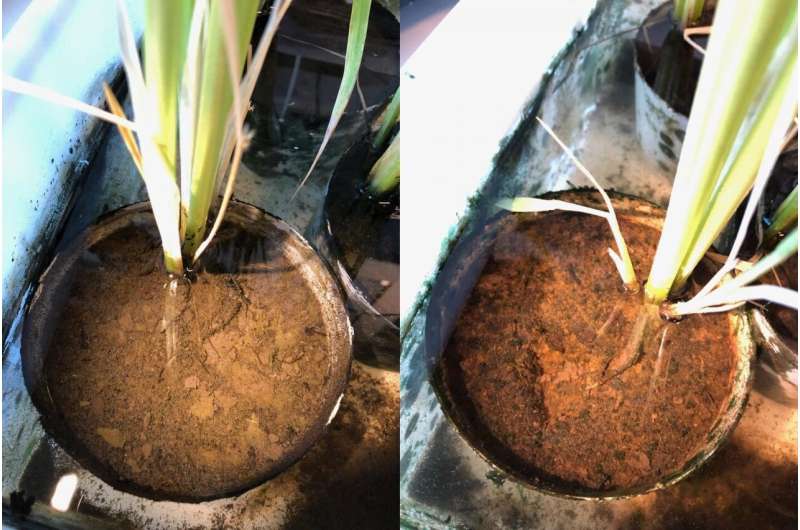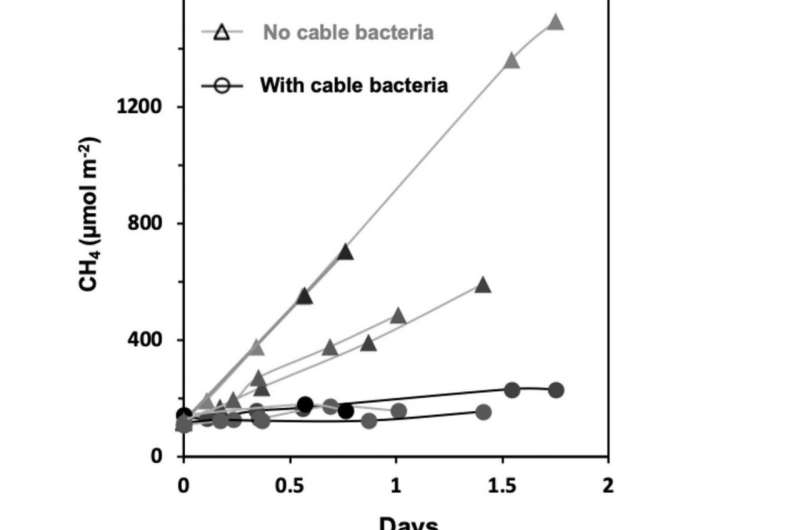Cable bacteria can drastically reduce greenhouse gas emissions from rice cultivation

A Danish-German research collaboration may have found a solution to the large climate impact from the world's rice production: By adding electric conductive cable bacteria to soil with rice plants, they could reduce methane emissions by more than 90%.
Half of world's population is nourished by rice crops, but rice cultivation is harsh for the climate. The rice fields account for five percent of global emissions of the greenhouse gas methane, which is 25 times stronger than CO2.
This is because rice plants grow in water. When the fields are flooded, the soil becomes poor in oxygen, creating the right conditions for microorganisms to produce methane. Now researchers from Aarhus University and the University of Duisburg-Essen have found that cable bacteria could be an important part of the solution. In the laboratory, they have grown rice in soil with and without cable bacteria and measured what happened.
"And the difference was far beyond my expectations. The pots with cable bacteria emitted 93% less methane than the pots without cable bacteria, "says Vincent Valentin Scholz, who conducted the experiments as a Ph.D. student at the Center for Electromicrobiology (CEM) at Aarhus University.
The result is published today in the scientific journal Nature Communications.

Increases sulfate and attenuates microbes
"Cable bacteria transport electrons over centimeter distances along their filaments, changing the geochemical conditions of the water-saturated soil. The cable bacteria recycle the soil's sulfur compounds, thus maintaining a large amount of sulfate in the soil. This has the consequence that the methane-producing microbes cannot maintain their activity," explains Vincent Valentin Scholz.
It is already known that rice growers can temporarily slow down the emission of methane by spreading sulfate on the rice fields. Apparently, cable bacteria can do this for them—and not just temporarily.
This finding adds a new angle to the role of cable bacteria as ecosystem engineers. While the authors emphasize that they have only the very first laboratory observation, it is tempting to speculate that enrichment of cable bacteria by sensible management of water and soil regimes could become a sustainable and convenient solution for reducing methane emissions from rice fields. But of course, it requires field studies to see how cable bacteria can thrive in rice fields.
More information: Vincent V. Scholz et al, Cable bacteria reduce methane emissions from rice-vegetated soils, Nature Communications (2020). DOI: 10.1038/s41467-020-15812-w
Journal information: Nature Communications
Provided by Aarhus University





















